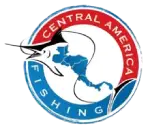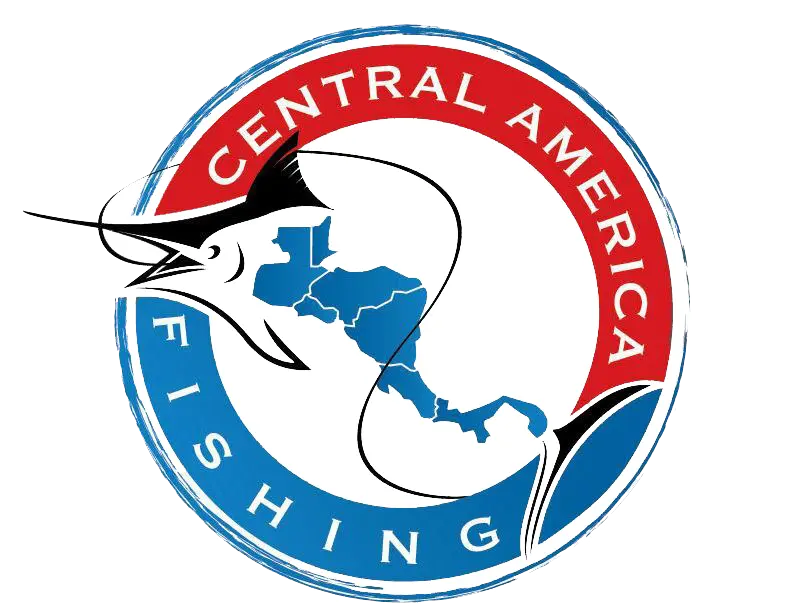Costa Rica Tarpon Fishing
Packages
Fishing Info
Seasons
Destinations
Available Species
FAQ’s
Central America Fishing is home to the best tarpon fishing in Costa Rica with our collection of local expert tarpon guides and all-inclusive tarpon packages. For the past 40 years, Costa Rica has gained fame for being one of the best tarpon fisheries in the world due to the constant numbers and the sheer size of the mature, adult tarpon that live here year round. Found patrolling along the Caribbean Coast, feeding in river mouths, and even throughout freshwater river systems like Caño Negro, Costa Rican tarpon fishing can be done in a variety of places and fished with both conventional tackle and fly fishing.
Costa Rica Tarpon Fishing Packages
Whether you are visiting Costa Rica for a short 3-4 day trip or a full week, we’ll put you in the right spot at the right time to optimize your chances at catching tarpon. Below are sample itineraries, but all of our Costa Rica tarpon fishing packages are fully customized and private so you can experience why Costa Rica is regarded as one of the best tarpon fisheries in the world. With our unmatched local knowledge and commitment to personalized vacation planning, trust our local expertise to set you up with one of Costa Rica’s top tarpon guides and see why 40% of our anglers are repeat or referral guests
Tarpon Fishing in Tortuguero
Coast 2 Coast
4-in-1 Fly Fishing Trip
The Complete Local Guide to Costa Rica Tarpon Fishing
Costa Rica is home to a lot of prized game fish, but tarpon remain at the top of angler’s wish lists year after year. We’ve been fishing for tarpon in Costa Rica for 20 years, and they are still one of our favorite fish to catch! Their combination of size, strength, and their incredible acrobatic jumps when hooked is something that few fish can match. Tarpon posses large black eyes, hence their Latin name ‘megalops atlanticus.‘ These big eyes allow them to hunt in low-light conditions, such as at night and in the murky waters around rivers mouths and along the coast. They often swim in big schools, which aids in hunting as well as protection from predators like sharks.
One of our favorite facts about tarpon is that they can actually breathe air. Tarpon have evolved a unique swim bladder that serves as a lung and actually allows them to gulp air from the surface. Oftentimes when you see a tarpon rolling at the surface they aren’t feeding, rather they are actually coming up to breathe air. This adaptation is critical as it allows them to live in both saltwater and freshwater, as well as low-oxygen environments. Over time this has helped them travel anywhere to hunt for food as well as allow juvenile tarpon to grow in harsh backwater environments that may be largely void of predators.
How Big are Tarpon in Costa Rica?
Tarpon in Costa Rica are typically in the 80-100 lb range, but we routinely hook into fish in the 150-200 lb range. A few times a year we see giants that our guides estimate to be 250-300 lbs, but they are extremely hard to bring to the boat without straightening, breaking, or spitting the hook or snapping the leader. We don’t see a lot of juvenile fish here, so a small tarpon in Costa Rica is 50-60 lbs. Unlike a lot of other destinations in Central America and the Caribbean that rely on migratory tarpon, Costa Rica is home to a large resident population of fish that provides a year-round bite from big, mature tarpon.
How Tarpon Feed
In order to catch one mighty silver kings, it helps to understand how they feed. Tarpon have large underslung lower jaws and inhale their food in a violent slurping or inhaling motion. Despite the fact you might have a 100 lb fish eating your bait, it can be easy to miss the subtle tug on your line when they bite. The tug you feel can be them sucking in your bait, or they may have inhaled it without you knowning and the tug you feel is them spitting your bait out of their mouths, meaning you already missed your chance to hook one.
What Tarpon Eat
Tarpon are generally opportunistic feeders and will readily eat whatever is available. Traveling in large schools in low-visibility water, the general attitude is ‘eat first, ask questions later‘ if you are a big Costa Rican silver king. Natural prey for tarpon in this part of the country includes shrimp, langostinos (prawns), sardines, mullet fish, and even baby turtles as this is one of the world’s most importante sea turtle nesting sites. We don’t typically use crabs like many anglers in Florida do.
Take a few minutes to watch the team at Central America Fishing battling tarpon in Costa Rica and you’ll get a better idea of how we fish for tarpon and just how big and powerful these fish are!
How to Catch Tarpon in Costa Rica
Tarpon fishing in Costa Rica can be done in various different ways based on sea conditions, what they are feeding on, and the angler’s preference. Outside of the river mouths along the coast where the tarpon are found, the water is usually 40 ft – 100 ft deep, so much of the tarpon fishing is done in deeper, dirty water as opposed to stalking fish in clear, shallow water like we do in other parts of the Caribbean. They can also be caught in the river mouths themselves feeding on bait that the tides and currents wash out. Of course having the right tackle to be able to hook and land these fish is perimount, so below we have a guide to help you catch your Costa Rican tarpon.
The Best Tackle for Tarpon Fishing in Costa Rica
In order to have any chance at catching one of the monster tarpon in Costa Rica, you need to have the right fishing tackle. Too weak of a rod will lead to a longer fight, and the longer the fight goes the higher more your odds increase of losing the fish. A big tarpon can also easily shatter too light of a rod. If you don’t have the right line & leader, you stand a very good chance of getting spooled or having your leader cut as they begin to fight. Lastly, if you don’t bring the terminal tackle, your hooks will never have a chance of sticking to one of these massive fish and their hard, boney mouths.
Rods
The tarpon in Costa Rica are big, 80-100 lbs on average, so you need a rod with enough backbone to do battle with them. Since we are typically drifting baits or jigging, a long casting rod is not needed. A 7 ft to 7.5 ft rod is the ideal length, and you’ll want a heavy rod. A fast action is ideal so you can properly work your jig or other artificial bait, and so that once you feel the bite you can move quickly to set the hook.
Reels
The most common way we fish for tarpon in Costa Rica is using heavy spinning tackle. A quality 6,000-10,000 reel spooled with 65 lb or 80 lb braid is ideal so that you have enough stopping power for these big fish. A big reel is also needed to be able to put 300-350 yards of braid on because these big fish not only jump in an effort to spit the hook, they can go on long runs and head to the safety of deep water during a long fight. Most of our boats are outfitted with Penn Battle III, Shimano Saragosa or Stella reels, or Okuma spinning reels.
Conventional tackle also works extremely well here, but most of our local Costa Rica tarpon guides use spinning gear because it’s simply easier for tourists and less-skilled anglers to use. A quality 20-30 pound class conventional reel, like an Accurate Valiantor or Okuma Tesoro, work great as they are easy to grip with one hand but still strong enough to tame these big silver kings. The standard Penn & Shimano Tiagra’s also work well, but are slightly larger for the angler to hold onto during a long fight.
Leader
The braided line is typically tied to a 100-200 lb mono leader, which is more resistant to the tarpon’s bony mouth and sharp scales. One of the best parts of tarpon fishing is seeing them launch themselves into the air – sometimes over six feet out of the water – however this is when you are most likely to lose the fish. Tarpon also feature sharp gill plates, so as they thrash their heads from side to side trying to throw the hook they can also cut through leaders up to 100 lbs. It’s here where “bowing to the king” comes into play – lowering your rod to the water when the tarpon jumps to provide a bit of slack in the line so the hook isn’t ripped out and so the line stays out of reach of those gill plates.
Hooks
None of the rest matters in tarpon fishing if you don’t have hooks that are strong enough to pierce their bony mouths and strong enough to withstand a long fight. Since the tarpon in Costa Rica are typically mature adult fish, we most often use 4/0-6/0 hooks. Circle hooks are ideal if you are drifting sardines or mullet, but J hooks are the choice for jigs and articials as you’ll need to set the hook hard once you feel the bite.
The Different Ways We Fish for Tarpon in Costa Rica
Jigging
One of the most popular and effective methods fishing for tarpon in Costa Rica is jigging. Bucktail jigs with big eyes, often rigged with soft plastics for added movement, are as simple and effective as it gets. Jigs with a 1/0 or 2/0 hook that feature bright colors like red, yellow, and pink seem to work well when mixed in with blacks and purples. These jigs not only mimic their normal shrimp and prawn diets, as you slowly jig you can cover the entire water column guaranteeing that sooner or later you’ll be in the face of a large silver king.
Live & Dead Bait
When available, Costa Rica tarpon guides love to fish sardines – dead or alive. A 7/0 or 8/0 circle hook put through the back of a sardines and floated along with the current is often a question of “when” not “if” most days. Mullet fish are also a favorite, though they are harder to find.
Hardbaits
If you are lucky enough to have a day when the Caribbean looks like glass, you can often see tarpon rolling at the surface. On days like this you can sight cast to them with poppers, stick baits, or even try artificial baits like crabs or even sea turtles. On the flip side, you may have bad luck and have days where you simply aren’t able to safely cross the river mouth into the ocean. Even when this happens, all hope is not lost as another classic Costa Rica tarpon fishing method is to anchor in the river mouth away from the breakers and cast out big rapalas. You’ll simply let the strong tidal currents take your lure back to the desired distance and provide all the movement your swimbait needs. As tarpon pass in and out of the river mouth they will eventually come across your lure and inhale it. This is a fun way to hook tarpon and see them sky out of the water, but very challenging to actually land them. In my personaly experience I’ve seen tarpon straighten treble hooks, crack wooden lures, and this was one of the few times I’ve been completely spooled by a fish (400 yds of 65 lb braid without stopping!).
Fly Fishing for Tarpon
Costa Rica has become one of the premier destinations in the world to fly fish for tarpon thanks to the sheer numbers and size of fish. These are mature, adult fish so a 12 wt – 14 wt rod with appropriate large arbor reel is recommended. Since this is deep water fishing as opposed to flats fishing in Belize, much of your day will spent blind casting towards spots where you think tarpon are lurking. For these conditions we recommend a sinking or intermediate sinking fly line so that you can position your fly deeper in the water column where the tarpon can see it. If you get a beautiful Caribbean day and can see the tarpon rolling, yours odds increase and you’ll be able to sight cast. Big streamers and classic tarpon flies like the famous ‘Black Death’ and ‘Cockroach’ are all good choices when tied to a 1/0 or 2/0 hook. A nice contrast in color, like chartreuse & white, red & white, or orange & white with some flash are usually good options.
Setting the Hook and Fighting a Tarpon
With their hard, boney mouths, properly setting the hook is the first step in landing your trophy tarpon. If you don’t set the the hook well, or set it in their boney jaw, you stand a good chance of losing your fish on the first set of jumps. The ideal hook set pierces the lip behind the jaw and hooks around it.
Most tarpon will jump out of the water two to three times as soon as they they feel the hook in an effort to dislodge it, and oftentimes they are successful. If they don’t simply spit the hook, their bony gill plates can cut right through a sturdy leader. For that reason, we saw you must “bow to the king”, in reference to their ‘silver king’ nickname. When bowing to the king, you dip your rod towards the water to give it some slack, otherwise with too much tension on the line the hook is likely to pop out or the leader snap when the fish begins to jump and thrash it’s head.
When tarpon fishing, we often refer to how many fish you “jumped” instead of how many you released because the percentage of fish released is much lower than the number of fish actually hooked.
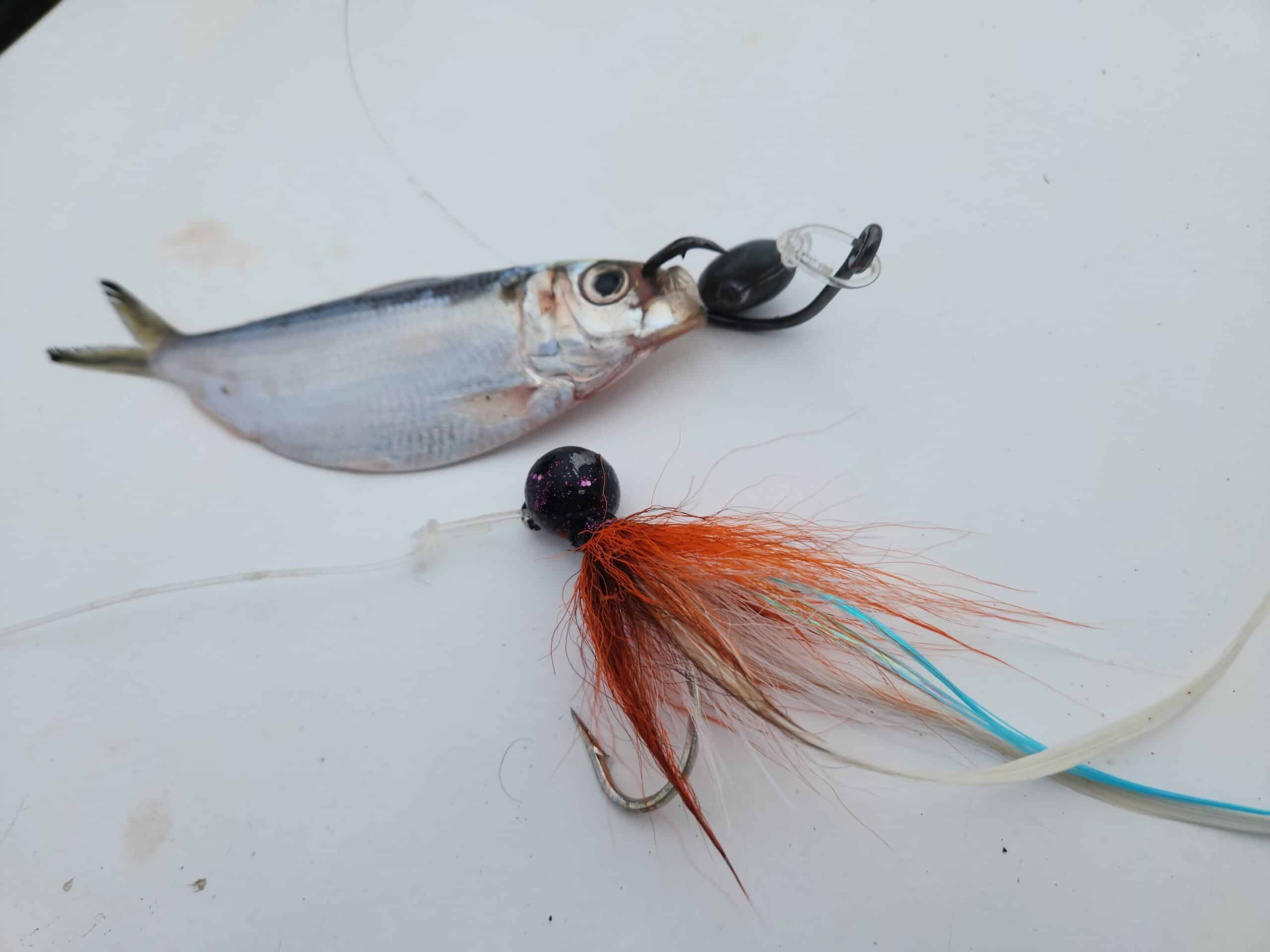
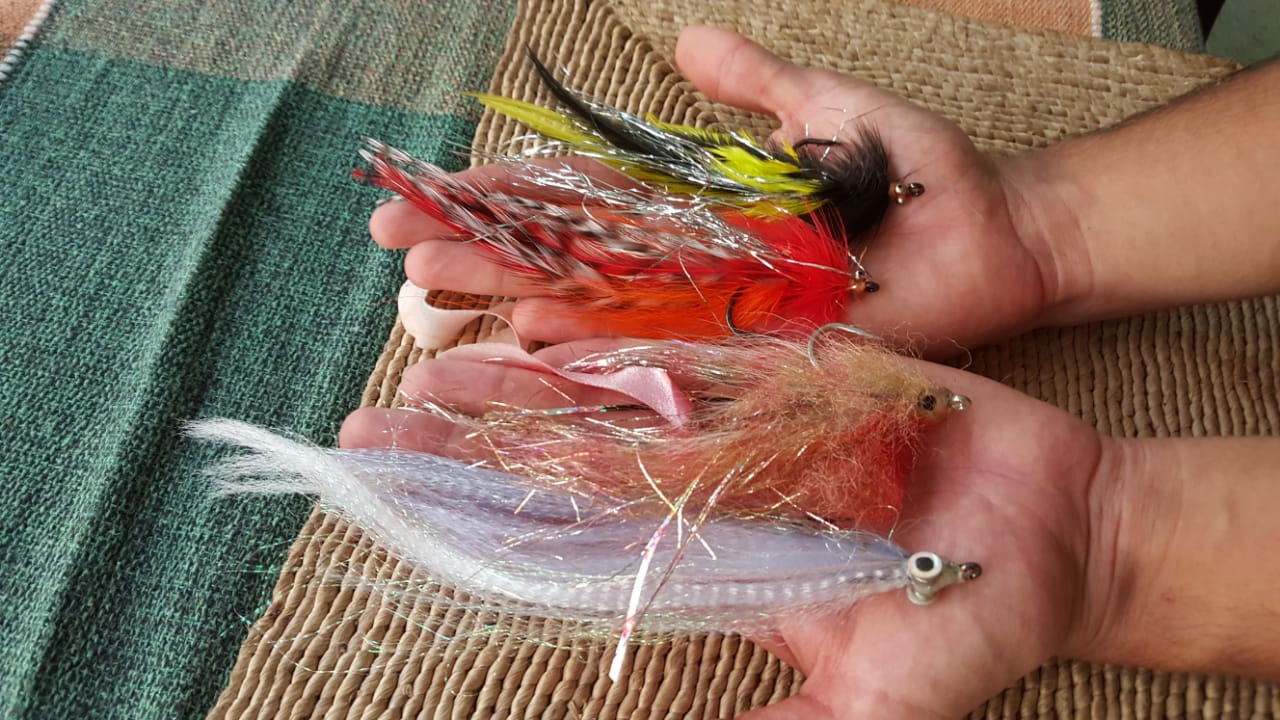
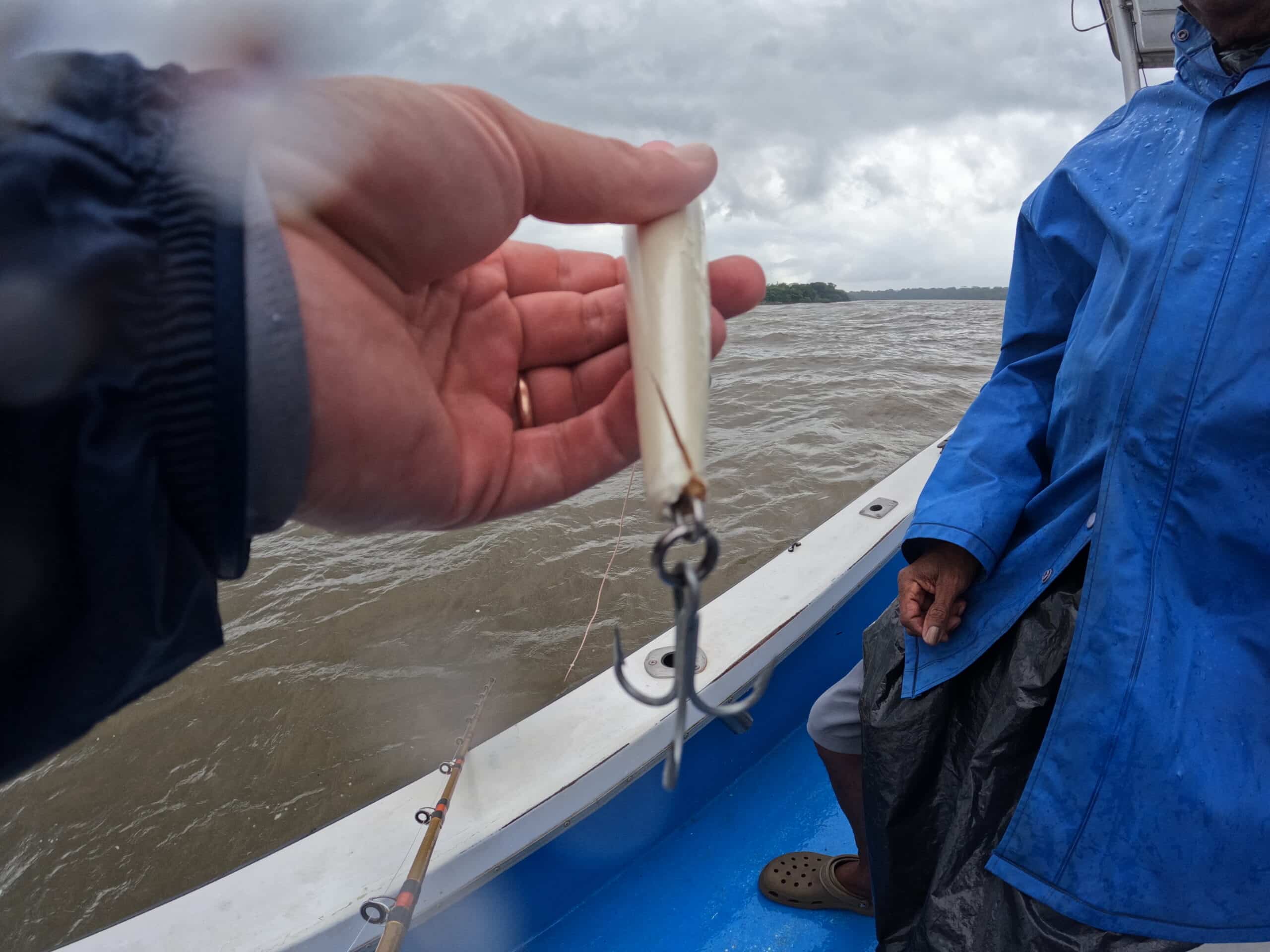
Tarpon Regulations & Safe Handling
In 2005, tarpon in Costa Rica were declared a ‘species of interest to tourist and sport fishing‘ in Costa Rica’s Law No. 8436. Sailfish, blue marlin, black, marlin, and striped marlin were also included that law. Shortly after, roosterfish were added as well. This doesn’t mean they are 100% protected from being harvested, but limitations are in place. Fortunately, Costa Rican culture never really viewed tarpon as tablefare to begin with, so the population of tarpon in Costa Rica large, healthy, and well preserved.
Like all fish, especially the large ones, tarpon should be kept in the water during the release and for pictures. Keeping them in the water helps support their body weight and helps avoid internal organs being damaged when bringing them into the boat. Fortunately tarpon don’t have teeth, so you can put your hands in their mouth as you gently revive them and release them in water. This is the best opportunity to take your picture.
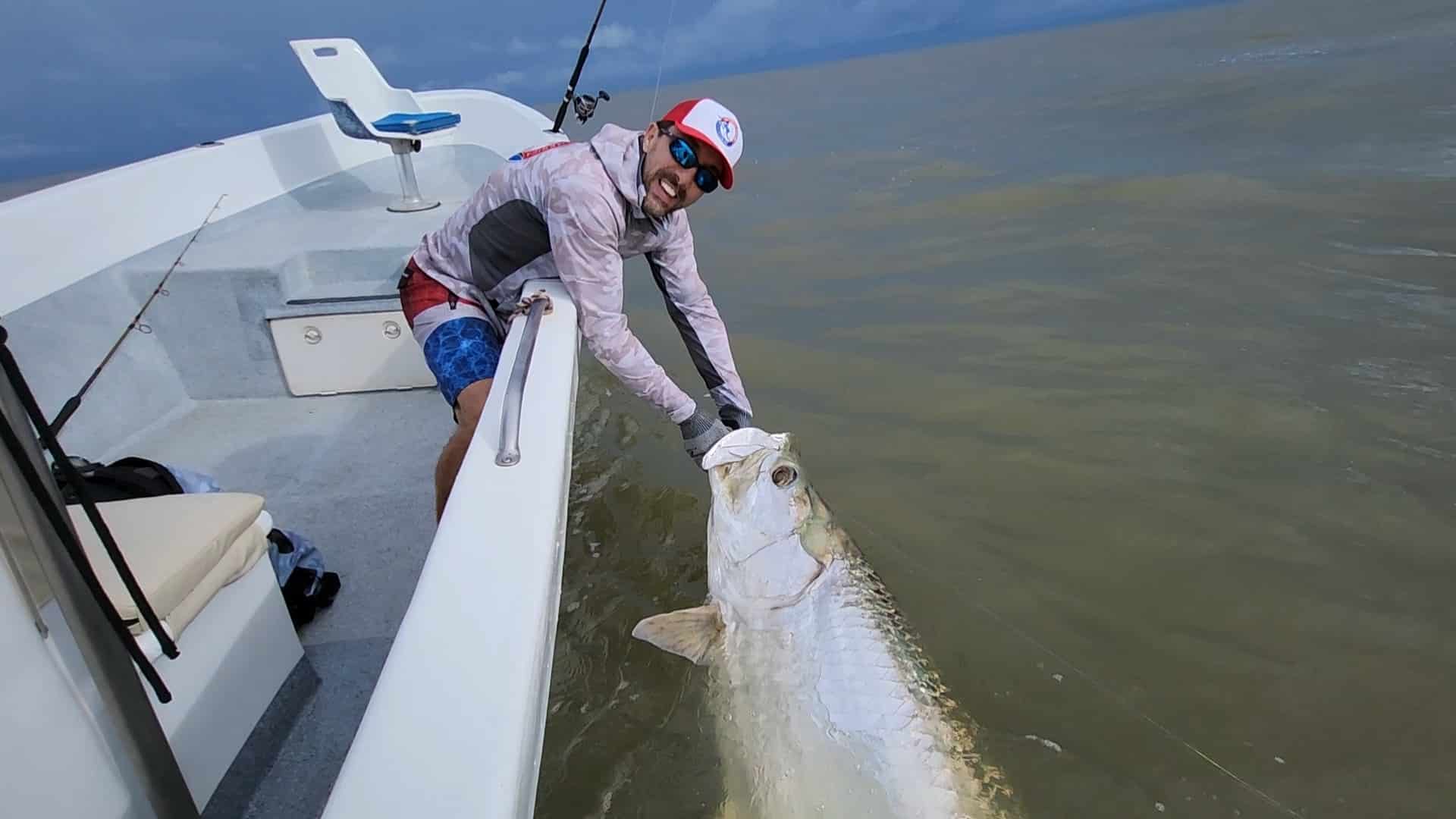
When is the Best Tarpon Fishing in Costa Rica?
There are two main seasons for tarpon fishing in Costa Rica: spring and fall. The spring tarpon season is from mid-Jan through mid-May and then the fall season is September & October. Here in Costa Rica the tarpon population is mostly resident, mature fish. We don’t catch a lot of juvenile tarpon and the tarpon fishing in Costa Rica is not based on migratory seasons like it is throughout much of the rest of the Caribbean and the Southern US. The large river mouths and the abundance of bait keeps the tarpon here year round, so our tarpon seasons are based more on weather and sea conditions rather than migratory patterns. Our Caribbean Coast can receive 250 inches of rain per year, so knowing when to visit is of the utmost importance for an enjoyable and successful trip.
Spring Tarpon Season
The spring season mirrors what is traditionally Costa Rica’s high season for travel. During these months it will typically be hot and sunny, though since it’s the Caribbean it can rain at any time.
January & February – These months mark the start of a new tarpon season so they are filled with excitement for anglers and guides alike. The weather can be unpredictable during these months however as we see cold fronts caused from the North American winter. When this happens, strong winds blow through the Caribbean into the coast, which can make things gray, rainy and blustery for 3-4 days at a time. When it gets like this, the river mouths can be too dangerous to pass out of so we get stuck fishing inside the river mouths.
March – While cold fronts and winds are still possible, it becomes less common in March.
April – This is the hottest & driest month in Costa Rica on both coasts, so the weather and sea conditions are usually ideal.
May – The first week or two of May generally offer the same weather as April – hot, sunny, and calm seas. Once we get to mid-May we start to see the rainy season begin, and the conditions on the Caribbean can vary from one week to the next. By June we recommend our anglers stop fishing the Caribbean coast.
Fall Tarpon Season
On the Pacific Coast the months of September & October are the wettest and slowest time of year, but that is actually the dry season on the Caribbean Coast. During these two months, the seas are often glassy calm and the weather hot and sunny, which makes spotting rolling tarpon that much easier. It’s also the time of year when the baby sea turtles are hatching, so there is usually no shortage of bait around. Costa Rica is generally too far south for hurricanes, so while the rest of Central America and the Caribbean may be on hurricane watch, September & October are what we consider to be our peak tarpon season.
Most years we can sneak out good fishing days into the first week or two of November, but late November, December and early January can offer some of the worst weather conditions on the Caribbean.
Tarpon Fishing and the Tides
When tarpon fishing in Costa Rica, we are essentially inshore fishing as we are targeting the fish along the shallow coastline and in the river mouths where they feed. As with any type of inshore fishing, that means that is can be very tidal dependent. During high tide, the tarpon move into the river mouths and can access the mangroves and shallow lagoons where baitfish like sardines may be hiding. This is a good time to be in the river mouth as they will be moving in and out of there as they feed. During low tide, the larger river mouths still have enough water for the fish to move around in, but that does tend to push the tarpon out into the ocean. On good days you can spot tarpon trying to corral bait along the sand beaches, so low tide is great for patrolling the shallow waters alonge the coast.
Tarpon Fishing and the Moon Phases
Most anglers believe that the moon phases have an impact on sport fishing, whether it’s positive or negative. When we fish for sailfish and marlin on the Pacific Coast, we tend to avoid the full moon as the theory is that the fish can use that light to feed all night long and won’t be as aggressive during daytime hours. The tarpon fishing in Costa Rica doesn’t seem to be affected by the moon one way or another. Our good friend, and Costa Rica’s most legendary tarpon guide, the legendary Eddie Brown, told us “The moon phase don’t really affect the tarpon like it does the billfish. The water they are swimming in is so murky and dirty, they can’t see very far anyway.” A full moon and a new moon will produce bigger tidal swings, but overall the tarpon bite will be affected by the presence of bait, not a particular moon phase.

Where is the Best Tarpon Fishing in Costa Rica?
The best tarpon fishing in Costa Rica is done in and around the large river mouths found along the Northeast Caribbean Coast. The main target zone is from the Rio Parismina just south of the Tortuguero National Park to the Rio Colorado, which is an offshoot of the Rio San Juan that forms the northern border between Costa Rica and Nicaragua. Depending on which river mouth has the best conditions and where the fish are, run times can be anywhere from ten minutes to one hour if you run all the way north to Rio Colorado. There are no roads in this section of Costa Rica so it is one of the most remote and protected regions of the country. It is comprised almost entirely by the Tortuguero Conservation Area, in which you’ll find the Barra de Colorado National Wildlife Refuge (200,600 acres) and Tortuguero National Park (190,100 acres).
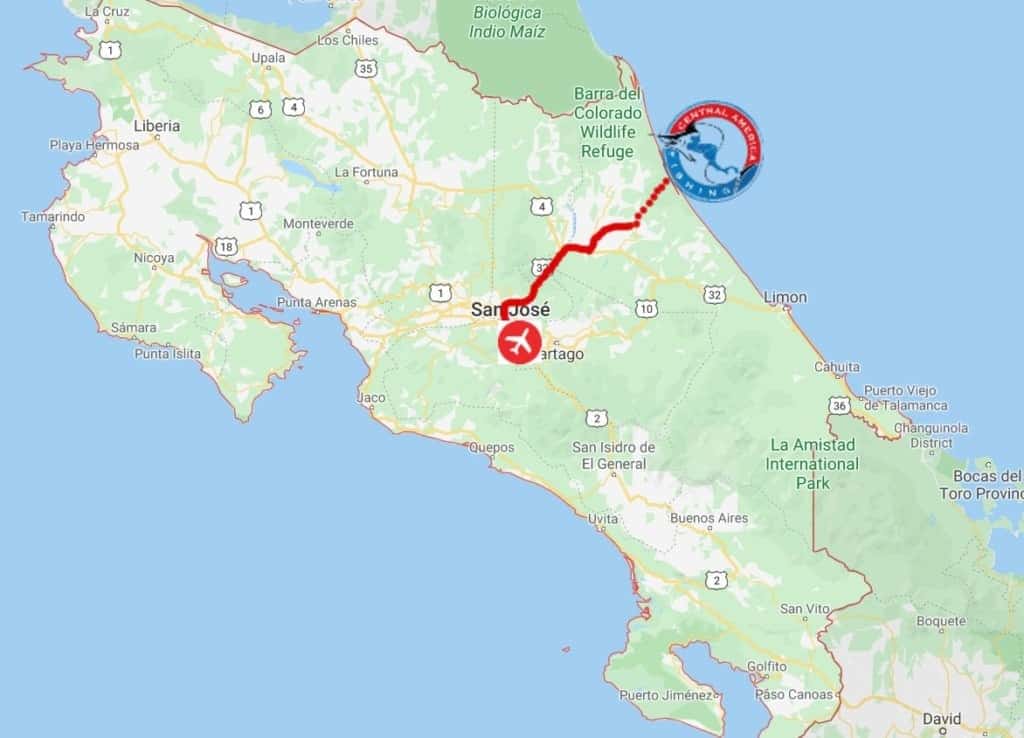
Barra de Colorado
The Barra de Colorado, or Rio C0lorado, is one of the most famous tarpon fishing destination in Costa Rica and all of Central America. Home to the classic old fishing lodges like the Rio Colorado Lodge and Silver King Lodge that have been around since the 19080’s, this is home to some of the biggest tarpon in Costa Rica. An offshoot of the Rio San Juan, which forms the border between Nicaragua and Costa Rica, it’s the largest river mouth on Costa Rica’s northeast Caribbean Coast. In the river mouth it’s common to see tarpon, crocodiles, and even bottlenose dolphin, and with three large predators around that means that this river holds a ton of bait.
How to Get There: You will want to fly in and out of the Juan Santamaria Airport in San Jose (SJO). After a night in San Jose, the fastest way to get here is a short domestic flight from San Jose directly to the Barra de Colorado. This is not a popular route however, so the domestic airlines in Costa Rica only offer it when there is enough demand. If the flight isn’t operating directly into Barra de Colorado, anglers can also fly into Tortuugero and then take an hour boat ride up there from.
Tortuguero
Tortuguero is best known for being an eco-tourism destination due to the fact it was named a national park in 1975. It is also considered to be one of the world’s most important sea turtle nesting sites. The Tortuguero River, and the maze of canals and lagoons behind it, is also home to some great tarpon and snook fishing. Due to the tourism infrastructure with eco-lodges and a couple of luxury boutique hotels, tarpon fishing in Tortuguero has grown in popularity the past two decades. Of course, our expert tarpon guides that are local to Tortuguero have a lot to do with that too! One thing we love about tarpon fishing from Tortuguero is that we can easily run north to the Barra de Colorado or south to Rio Parismina, so we have a lot of options based on weather conditions and where the tarpon are feeding.
How to Get There: You will want to fly in and out of the Juan Santamaria Airport in San Jose (SJO). Most tarpon fishing vacations to Tortuguero have you spend your first night in the capital of San Jose, but it is possible to come directly from the Arenal Volcano or Pacific Coast as well. The fastest way to get here is a short 25-minute flight from San Jose, which allows you to fish the same day. The scenic route consists of a combination of a van ride out of the Central Valley to the Caribbean lowlands, stopping for breakfast, and then a 1.5 hr boat ride through the canals of the Tortuguero National Park.
Rio Parismina
Located 19 miles south of Tortuguero is the Rio Parismina, better known as “Rio P”. This is home to the other 40 year old fishing lodge in the area, and our personal favorite tarpon lodge in Costa Rica, the Rio Parismina Lodge. Owned & operated by the same people for the past 40 yrs, Rio P offers great fishing, good food, and a beautiful location. The Rio Parismina itself is one of the biggest rivers along this stretch of remote coastline, but unlike the Barra de Colorado where you often see boats from varios lodges and local captains fishing in the same spot, you’ll likely have this river mouth all to yourself. We’ve also experienced some fantastic machaca fishing in the smaller rivers nearby when the main river mouth was too rough to fish.
How To Get There: For all tarpon trips to Rio Parismina you will want to fly in and out of the SJO Airport. If you stay at the all-inclusive Rio Parismina Lodge, you will take a private charter flight from San Jose directly to the Rio Parismina landing strip. From here you can walk or take a short boat ride to the lodge.
Southern Caribbean Coast
You can also catch tarpon along the southern Caribbean Coast of Costa Rica, but the numbers are not as plentiful as in the north. There is more tourism development here as well with beach towns like Puerto Viejo, Manzanillo and Cahuita, so it offers beautiful beaches but not the remote jungle feel like the northern Caribbean Coast. There are also not as many rivers here to concentrate the tarpon like in the north.
How To Get There: There are no domestic flights to Southern Costa Rica, so the only way to arrive is a 4-5 hr drive from San Jose. This will take you to the large port town of Limon and then you’ll head south down the coast.
Caño Negro – Jungle Tarpon Fishing
Over the past few years, there has been a buzz on the internet about the “jungle tarpon” in Costa Rica. These incredible fish have traveled over 100 miles from the Caribbean up the Rio San Juan and then down into Costa Rica’s Caño Negro Wildlife Reserve and it’s expansive lagoon and river system. While all of that is as true as it is amazing, in our experience fishing here this is more about the novelty of catching a freshwater tarpon versus the excellent fishery itself. The tarpon have a lot of room to spread out here, so it’s not as easy to find them as it is along the Caribbean Coast when they concentrate near the river mouths. These fish are often very dailed into their bait, so getting them to eat a fly is as hard as it anywhere in the world. The Caño Negro Reserve also closes tourist acces for several months a year for the gaspar (tropical gar) breeding season, so between that and local weather patterns you can only fish here a few months a year. If you really want to experience the jungle tarpon of Costa Rica, our advice is to make a few nights here part of a larger trip, but not the only destination on your Costa Rica tarpon adventure.
How To Get There: The Caño Negro Reserve is reachable from the Arenal Volcano/La Fortuna area in a day trip. It is about a 1.5 hour drive each way from Arenal, so if you are only fishing one day it is easy to stay in Arenal and make a day trip. If you are going to fish multiple days, it is better to stay at one of the more-rustic eco lodges in the Caño Negro area.
The Pacific Coast
Over the past few decades, more and more tarpon have been caught and released along Central America’s Pacific Coast. Native to the Atlantic Ocean, the only way they were able to cross oceans was through the Panama Canal. Every ship that goes through the canal uses 52 million gallons of water, and with that undoubtedly a few fish are included. The fact that tarpon have not only survived, but thrived, in a completely foreign ocean speaks to their incredible adapability. Catching tarpon on the Pacific Coast is still extremely rare, so there is not enough of a population to talk about seasons or the best time of year to target them. To put it in perspective, our entire fleet of boats out of Quepos, Costa Rica might catch 4-5 a year. In 2016 I personally hooked one out at Coiba Island, Panama and in March 2024 one of our guests released a beautiful 80 lb tarpon fishing from Quepos, Costa Rica – but this is about luck, not a larger population of fish.
We will help you coordinate all logistics, in-country travel, and hotels for your customized Costa Rica tarpon vacation.
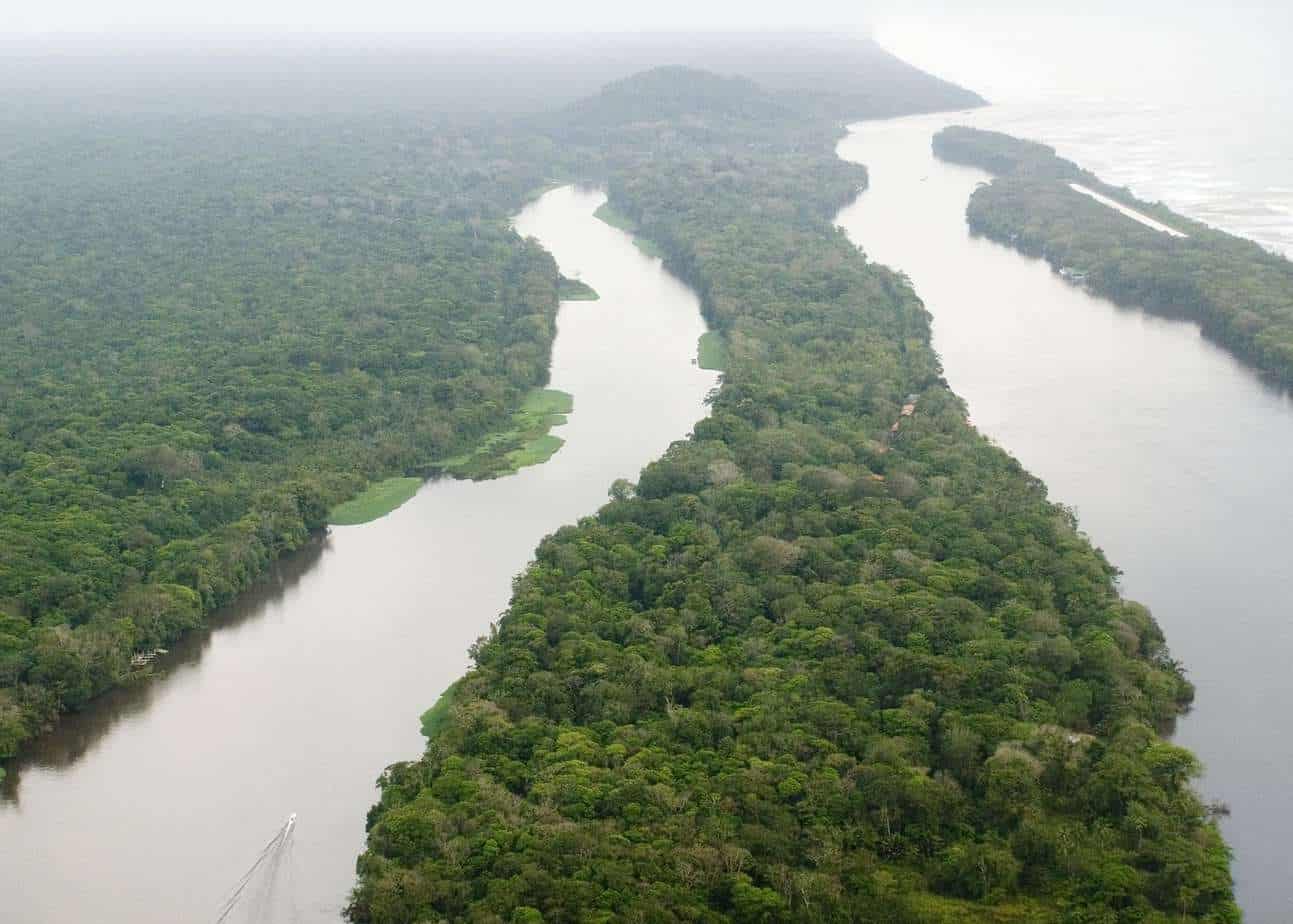
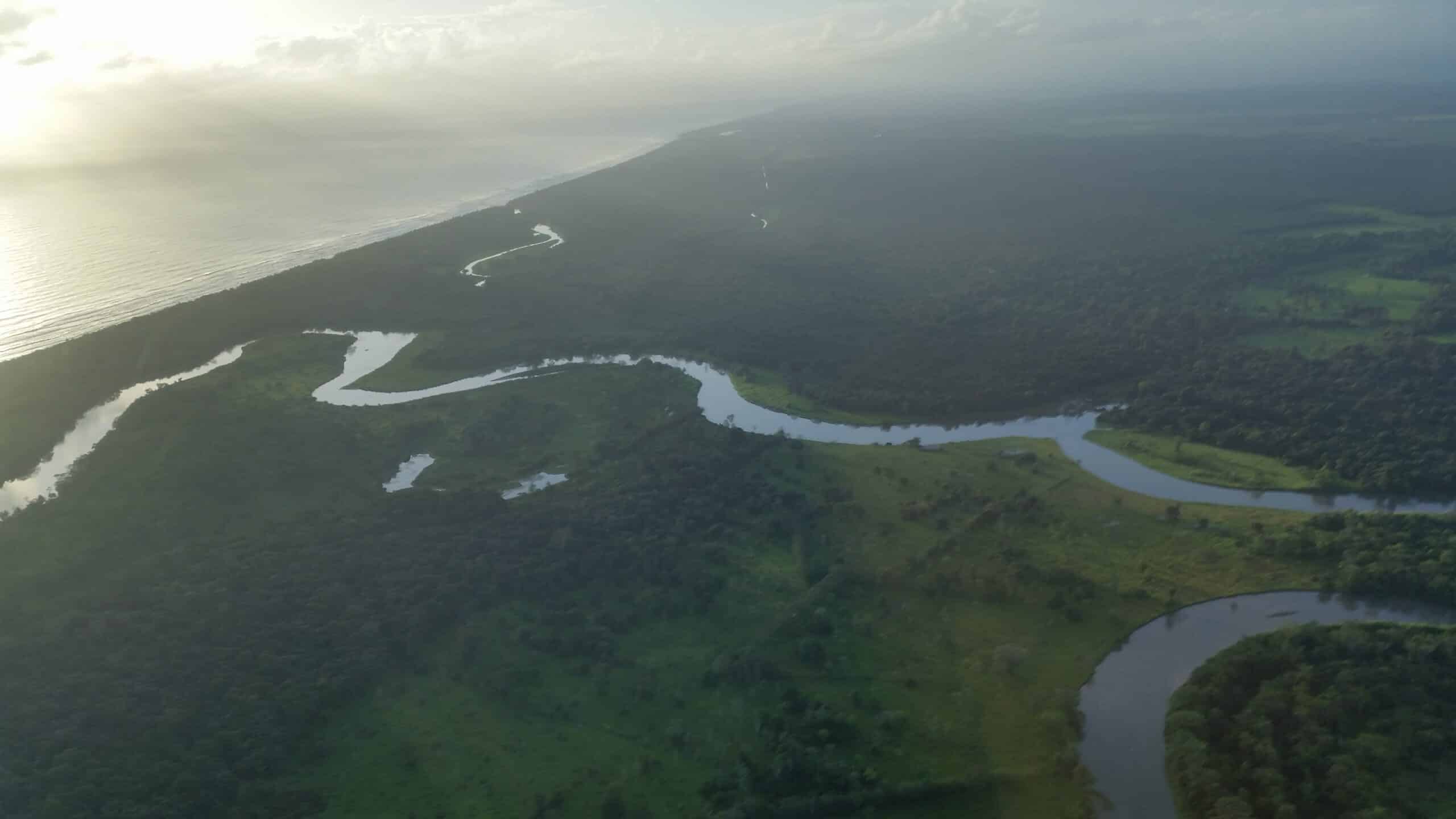
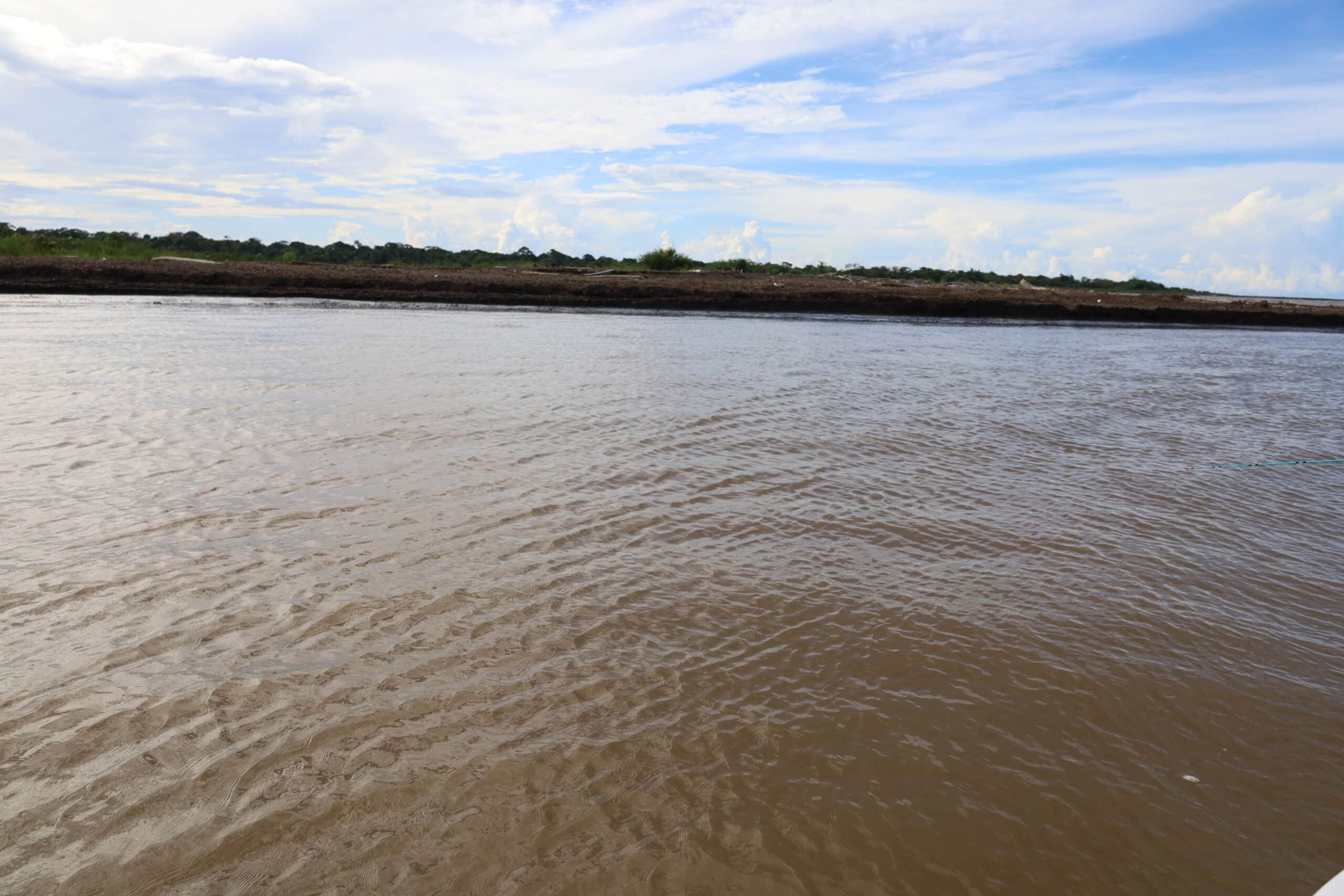
Available Species on Costa Rica’s Caribbean Coast
Without any doubt, the main attraction for fishing on Costa Rica’s Caribbean Coast are huge tarpon and world-record sized snook. While they will garner anglers’ attention 95% of the time, there are other species available in the vibrant coastal waters like jacks, snapper, mackerel, and occasionally big grouper. You also have the option to fish with light tackle in the freshwater canals and lagoons for exotic local species like rainbow bass (guapote), machaca, mojarra, and the rare tropical gar.
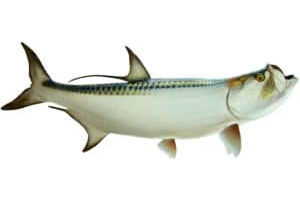
Tarpon
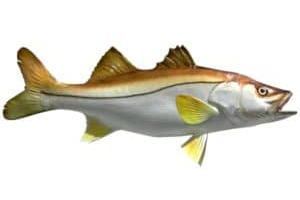
Snook
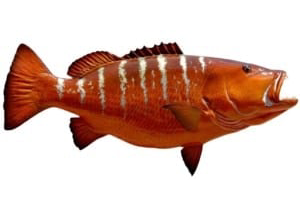
Cubera Snapper
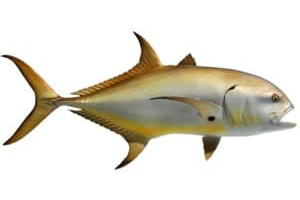
Jack Crevalle
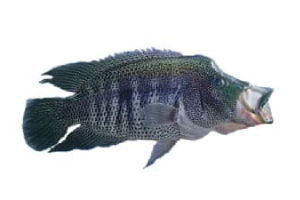
Rainbow Bass
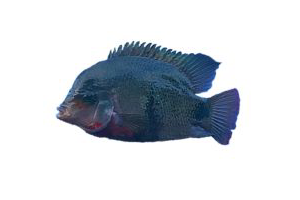
Mojarra
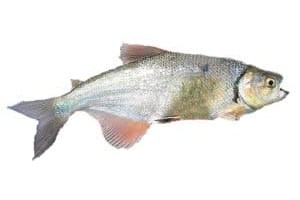
Machaca
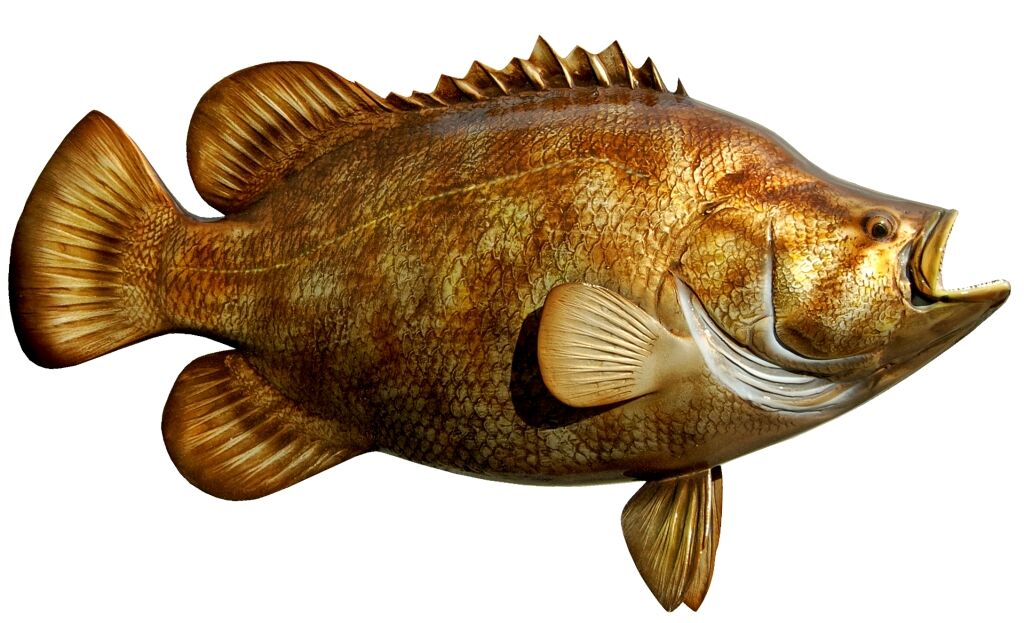
Tripletail
Tarpon Fishing Charters & Guides in Costa Rica
When you fish on Costa Rica’s Pacific Coast, you’ll find boats ranging from 26′ super pangas to 60′ luxury yachts. The most common boat there is the 30′-40′ sport fisher with a tower, cabin, and a large cockpit. You won’t find anything close to that on the Caribbean Coast as the ideal boat for tarpon fishing in these waters is a small, deep v-hull center console. The hull design allows the boats to punch through waves in the river mouth and handle the sweels out on the open ocean, while the center console design allows two anglers to be casting to and fighting fish at the same time. These types of boats are set up with a fighting chair either at the bow or at the helm so that you don’t need to fight the tarpon standing up all day long.
Local fishing guides, and a few budget-friendly operations that outsource their fishing charters to these local guides, can be seen fishing in simple pangas. On good days, it is certainly possible to fish from a panga, but if there is any sort of weather you won’t be able to do much near the river mouths and won’t have enough speed to check out other spots. From our 20 yrs experience tarpon fishing in Costa Rica, these waters are not the kind that you want to be swimming in, so skimping on your boat selection could be a very big mistake. You’ll have a much more productive, and safer, tarpon fishing experience in a center console with dual outboards. Our best tarpon guides, whom have been fishing here for 35-50 years, as well as the legendary 40 year old tarpon lodges, all use 26′ center consoles with dual outobards.
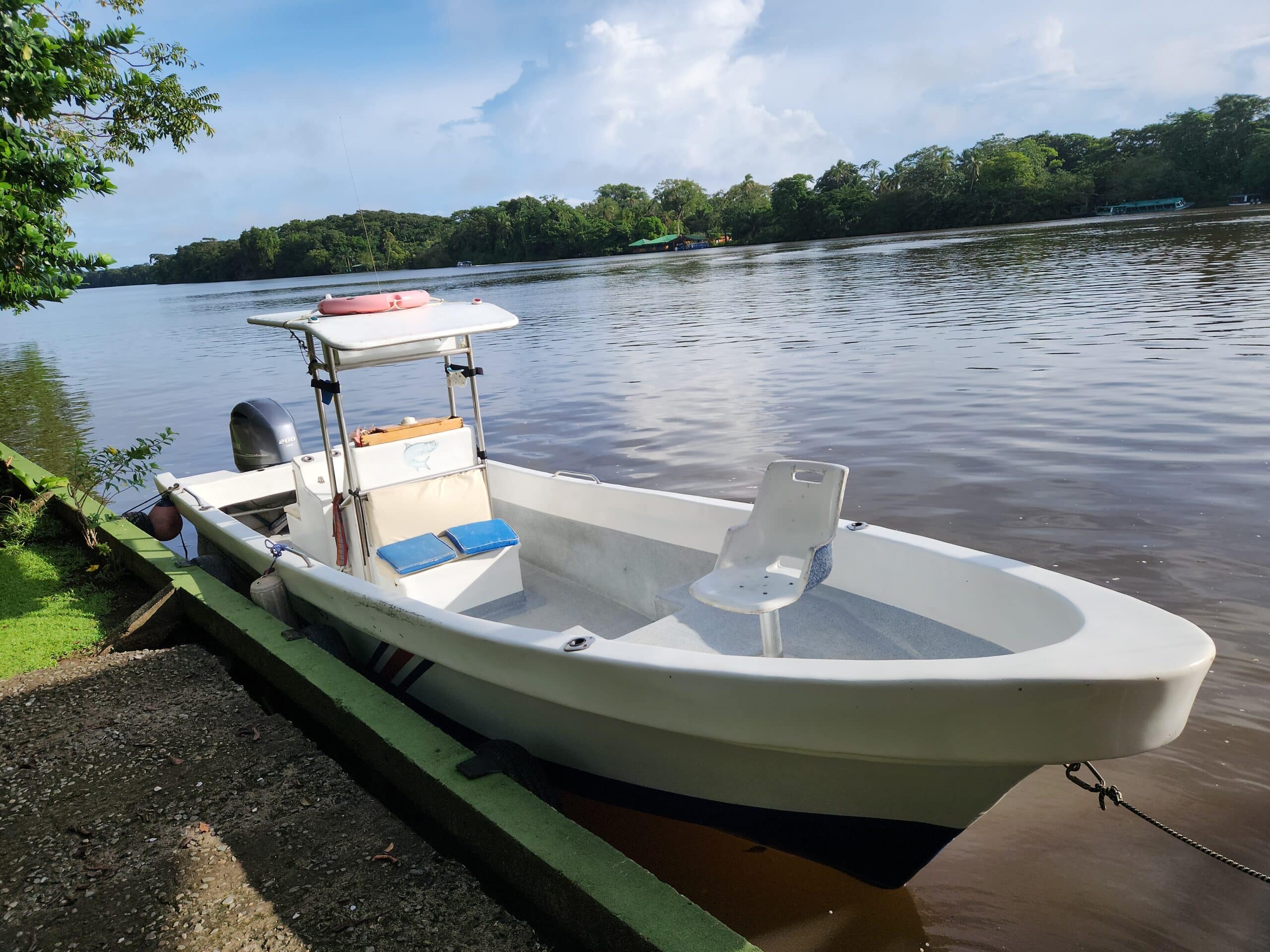
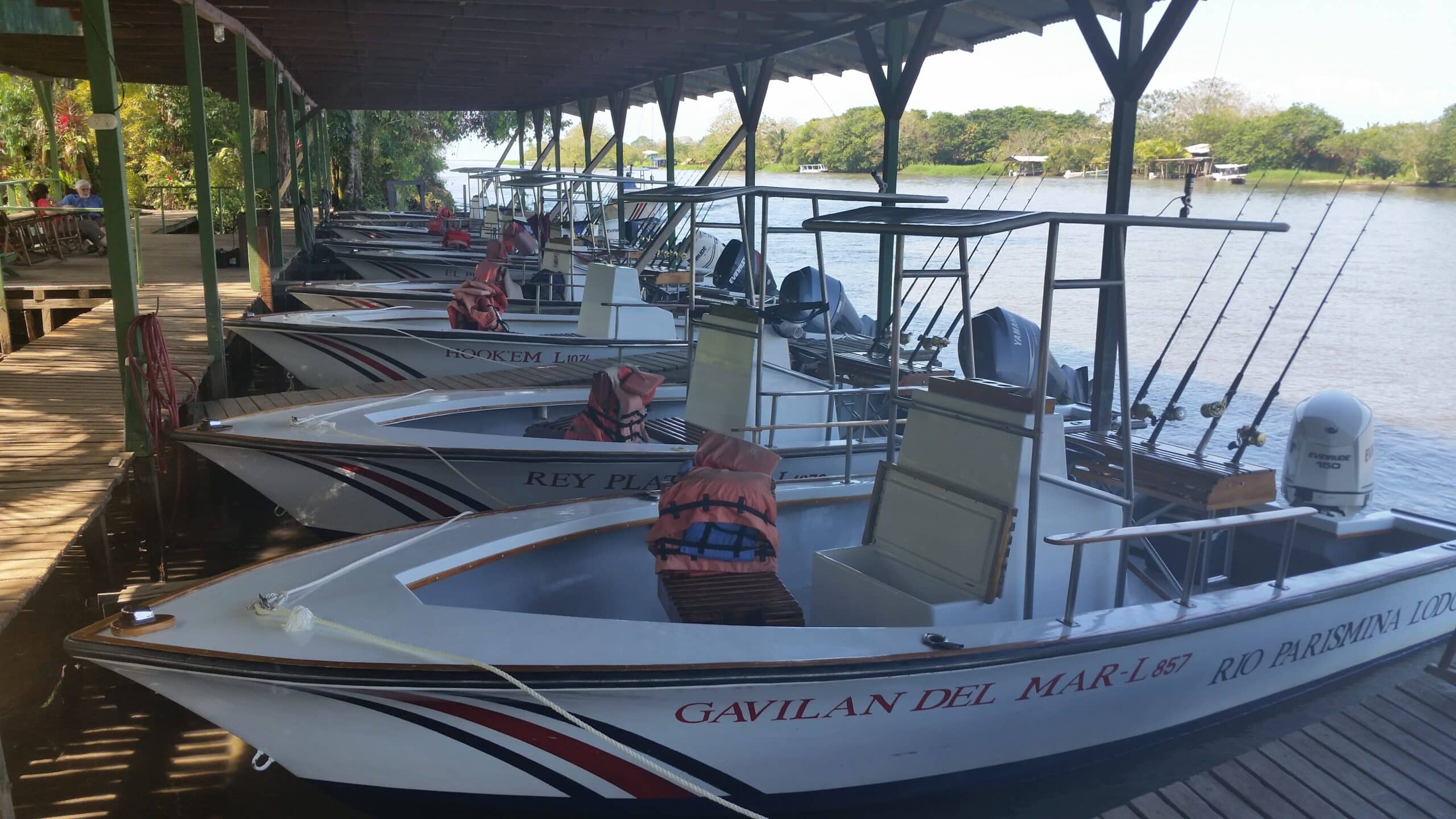
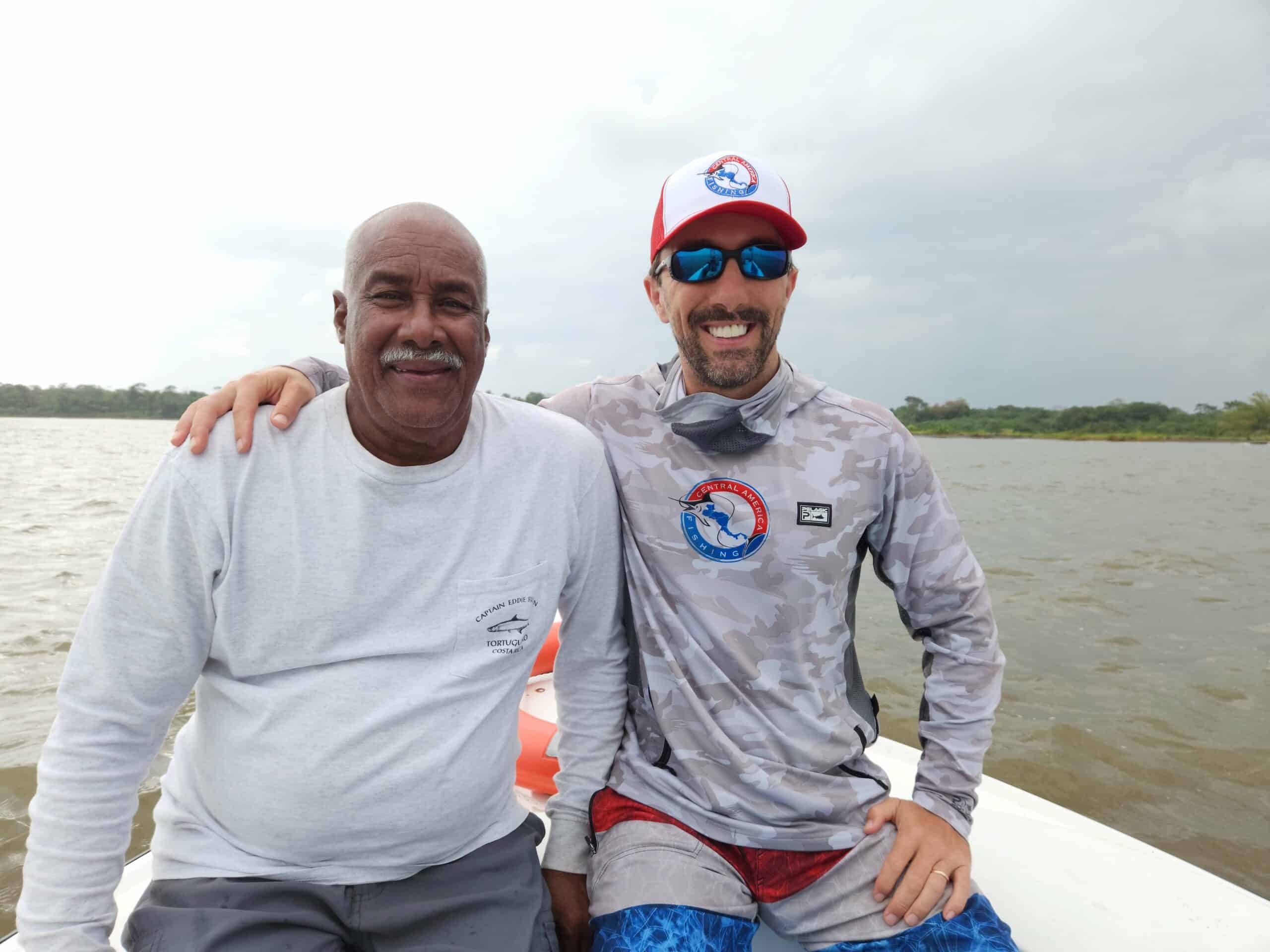
Costa Rica Tarpon Lodges & Resorts
When you go tarpon fishing in Costa Rica you have two choices for accommodations: an all-inclusive tarpon lodge or an eco-luxury lodge. The Caribbean Coast of Costa Rica is the least developed region of the country, so you won’t find large all inclusive resorts or luxury beach hotels here. Unlike the Pacific Coast, Costa Rica’s Northeast Caribbean Coast is not considered a beach destination due to strong currents, black sand, and the presence of large predators.
All-Inclusive Tarpon Lodges
Some of the first pioneers along the remote Caribbean Coast were the all-inclusive tarpon lodges, which have now been around for over 40 years. Several are found on the Rio Colorado, such as the historic Silver King Lodge. The Rio Parismina Lodge is located farther south on the Rio Parismina, and recently underwent some renovations in 2025.
The all inclusive lodges are great for large groups, anglers who like to have all meals & alcoholic drinks included, and for those who like to be around the fishing-lodge atmosphere for the story telling and comraderie with fellow anglers.
Eco-Luxury Hotels
If an all-inclusive fishing lodge isn’t your style or within your budget, other options include eco-luxury lodges in and around the Tortuguero area. Many of these hotels offer basic accommodations of rooms with ceiling fans and private bathrooms but no air-conditioning or TVs. There are one or two luxury 4-star hotels in the area that offer air-conditioning, TV, mini-fridge and luxury bedding. Due to this area being so isolated, all the hotels here include three meals a day as part of your package.
When you stay here, you fish with our legendary local tarpon guides, who will pick you up right at the hotel dock each morning. Besides the tarpon and snook fishing, the main tourism this area attracts is eco tourism for the incredible wildlife, untouched rainforest, and being one of the world’s most important sea turtle nesting sites. These eco-luxury hotels are a better fit for visitors who want to see what else the area has to offer or for groups that have a mix of anglers and non-anglers.
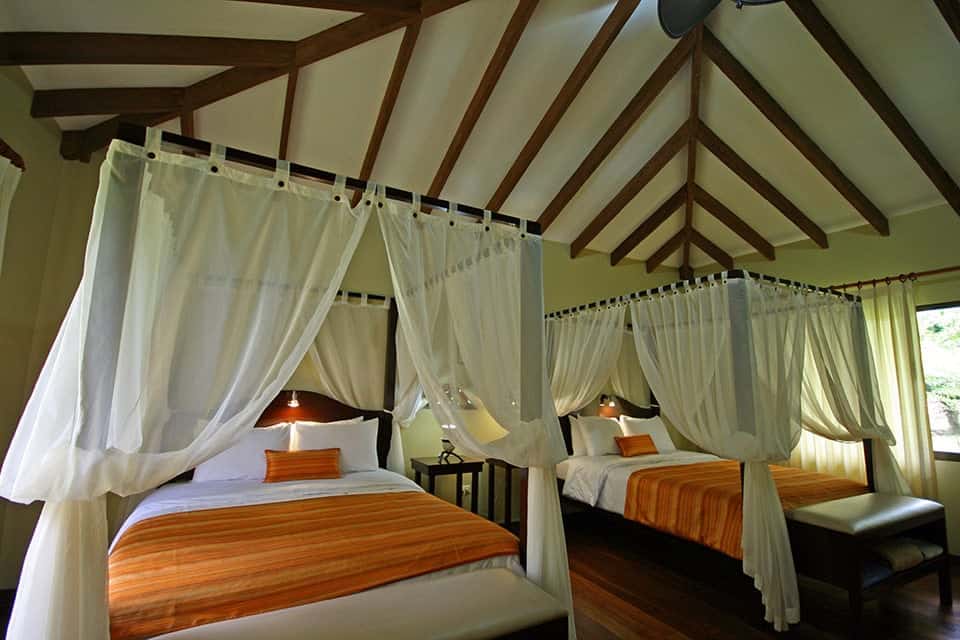
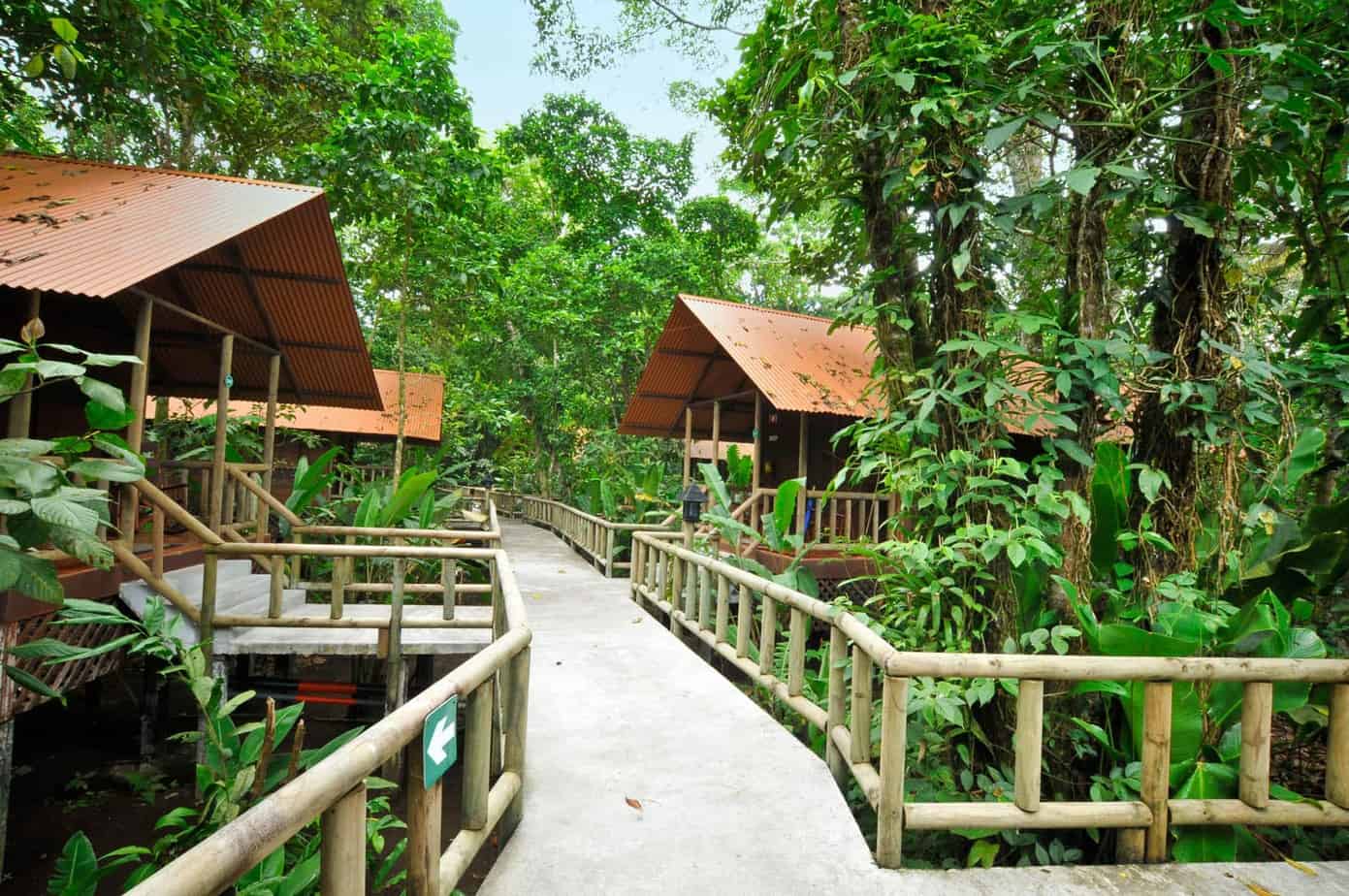
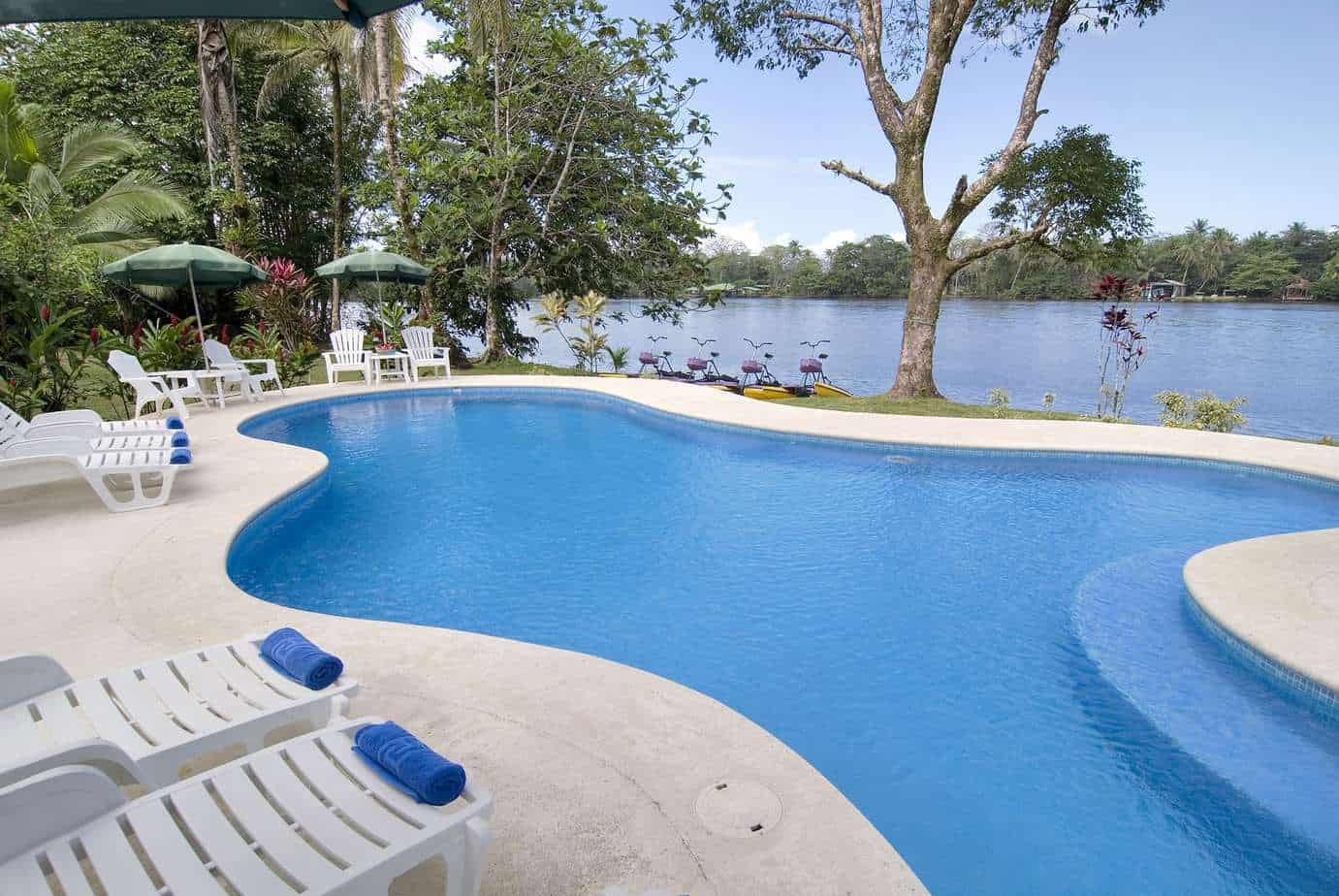
Day Tours & Non-Fishing Activities
Our Costa Rica tarpon fishing packages don’t need to be all fishing, all the time. Whether it’s an off day from fishing or for the non-anglers in your group, there are several great eco and adventure tours available along our lush Caribbean Coast. The list includes:
- Canopy zip-line tour
- Guided Tour through the canals of the Tortuguero National Park with trained naturalist guide
- Kayaking
- Sea Turtle Nesting Tour (seasonal)
How to Plan Your Costa Rica Tarpon Fishing Vacation
Central America Fishing makes planning your Costa Rica tarpon vacation easy and stress free thanks to our 20 years of local expertise and by offering the best direct pricing. Get started planning your customed tarpon vacation in these easy steps:
- Download our FREE Costa Rica tarpon fishing guide:

- Review our Costa Rica fishing calendar to review the best time of year to visit based up the fish you want to catch.
- Watch our YouTube video to see what the best tarpon fishing in Costa Rica looks like:
- Contact us to start planning your customized tarpon fishing vacation. You can spend hours researching when to visit, where to stay, and who to fish with – but an email or a short phone call with us can save you all that time. More importantly, we make sure you are in the right spot, at the right time, and fishing with the best captains available.There are no booking fees and we always charge the same rates as the hotels, tour companies, and fishing boats, so you get the same direct pricing using our expertise as you would trying to learn and manage all this on your own. Plus, with our decades of experience in the industry, we have contacts and operators that you’d never find online on your own. Whether it’s a hardcore fishing trip, a family vacation, or a honeymoon, we’ll hand pick the perfect accommodations and fishing boat to make sure that your vacation with us is one of the best you’ve ever had.
Call us anytime at 855-414-3474 or submit a web inquiry and we’ll get back to you within 24 hrs to start planning your dream fishing vacation. We can also combine a tarpon trip with a Los Suenos fishing trip or a Quepos fishing trip, allowing you to fish both coasts in the same week.
Check out a few of our client testimonials from previous tarpon anglers below:
“Chris, Our trip to Costa Rica was nothing short of amazing, thanks to you. My brother and I had the adventure of a lifetime—everything was perfectly organized from start to finish. The transfers, the lodges, and the fishing days all ran seamlessly, which made the entire experience stress-free and enjoyable.
The fishing itself was unforgettable. We landed an eye popping triple tail, tarpon, sailfish, blue marlin, and tuna. We even tried some popping for roosters—though we didn’t land one, the experience itself was incredible and added to the adventure.
What really stood out was how spot-on every detail was. The timing, logistics, and planning were flawless. It’s clear that your expertise and experience made all the difference. This trip created memories we’ll carry for a lifetime, and we couldn’t be happier with how it turned out.
We highly recommend Central American Fishing to anyone looking to book a world-class fishing adventure. We’ll definitely be planning our next one through you.”
“Hey Chris! All good at home! It was a great trip! Everybody enjoyed it very much!
The hotels were well located, clean and good standard food. The hotel staff was very helpful and friendly.
The fishing guides were excepcional. They didn’t measure efforts for us to hook Tarpons. Me and my father fished with Primo. He was great, we really enjoyed fishing with him.
We all would like to catch more tarpons maybe next time. Thank you.”
“Hey Chris, The Westin was nice. We were wiped out so we didn’t do much but eat & sleep. It poured down rain the whole time so it didn’t matter.
As you already know Primo is top notch and I consider him a friend now. Fishing was tough and very slow. It was 3.5 days before we hooked the first fish, but what a fish. Then hooked two more the last day.
Holy Moly those are big fish. It’s hard to call what I did truly ‘fly fishing’. The only casting we did was the first one while drifting back from the mouth of the river, but fighting those fish on a 12 weight is unbelievable. Each fish fights a little differently. The team work it takes between the fisherman & the boat captain. The biggest one just lined out, after the first big jump & run at the boat, then pulled & pulled for a good 2 miles! No way I could have stopped it without catching up with the boat. Then it laid on its side and it was over. The second tarpon, which was half the size, made multiple runs then would run right back at the boat and dive under each side. Primo was constantly busy backing up and positioning the boat while I had the rod straight down weaving back and forth in front of the boat. It just did not want to give up…….
The third & probably the largest tarpon hit hard behind the boat, then ran straight at the boat before dodging sideways to the other side right behind the motor. I was on my tippy toes with the rod up trying to clear the motor and the cab of the boat while Primo was reeling his line in. All this happening in mere seconds… It made a short leap out of the water then dove down and came out along the boat some 30 yards out at least 10 feet in the air. I will never forget that visual. It snapped that 150lb leader while shaking its head at the peak of that jump. Unfrigginbelievable. What a fish.”
What Our Anglers Love About
Costa Rica Tarpon Fishing
Tarpon is a bucket list fish for many CAF anglers, so coming to Costa Rica and having a realistic chance at fighting a 100+ lb fish is a dream come true. These are not foolish juvenile fish hiding in a river, these are big, adult tarpon that will give you the fight of a liftime.
The best tarpon fishing is done on our remote Caribbean Coast, which is one of the least developed regions of Costa Rica. CAF anglers are often surprised and amazed at the beauty and expansiveness of the rainforest they are fishing in.
There is understandly a lot of trepidation when our guests book a trip to travel 3,000 miles from home, head deep into the Costa Rican jungle, and spend all day fishing with a local guide they don’t know. Week after week, CAF anglers are always pleasantly surprised when they fish with our local tarpon guides and learn that they are native English speakers, welcoming hosts, and expert anglers.
What We Love About
Costa Rica Tarpon Fishing
Costa Rica’s Pacific Coast gets the majority of the headlines and social media attention, so the Caribbean Coast is often overlooked. One thing we love about fishing isn’t just catching fish, it’s about the places we visit to do that. Tarpon fishing allows us to send our guests to see a corner of Costa Rica that many people would never visit unless they are anglers.
The average size of the tarpon we catch in Costa Rica is 80-100 lbs. Occassionally we’ll catch smaller 50-60 lb fish, but the trade off for that is that it’s entirely possible that the next bite could be from a 150-200 lb fish. MANY are hooked and lost here every season.
Our expert tarpon guides are local to the area, have decades of experience fishing these waters, and speak native English. Our guests love spending days on the water with our guides because even if the fishing is slow, you are still going to leave knowing more about tarpon fishing than you did before the trip.
Costa Rica Fishing FAQs
How many tarpon can I expect to catch in Costa Rica?
If the weather cooperates, anglers can expect to get 5-10 bites a day on average. Like any fishery, conditions vary from week to week and no year is the same. If the ocean is rough or conditions are tough, anglers can deal with wind, rain, and big seas and may struggle to get a bite. If the Caribbean is laid down and the big schools of tarpon are in the river mouths feeding, it’s possible to have days of 10-20 bites.
How big are the tarpon in Costa Rica?
The average size of tarpon we catch is 80 pounds. Catching big tarpon in the 100-150 lb range is common, and every season we hook a few monsters that can grow as big as 200-300 lb range. We don’t see many juvenile tarpon here, so our “small” tarpon are 50-60 pounds.
Do I need a fishing license to tarpon fish in Costa Rica?
YES. All anglers need a fishing license to fish in Costa Rica. These are sold by the Instituto Costarricense de Pesca y Aquacultura, or INCOPESCA, as they are known here. Unfortunately, their website has functionality and language issues so it’s not easy to use, so you can buy the license in the morning right before you fish for the first time. The cost is $15 for one week or $30 for one month and it must be paid in cash.
How many people will be on my fishing boat?
All fishing charters booked by Central America Fishing are private, so the boat is 100% yours. We do not set up any shared charters.
What is the standard tip for a fishing charter in Costa Rica?
A standard tip for a charter fishing crew in Costa Rica is 10%-20% of the cost of the charter. Most captains are paid a low salary with the idea they’ll earn more tips the more they fish, but many mates rely 100% on tips for their income. Tipping in USD or Costa Rican colones is fine. We recommend giving the entire tip to the captain and let him divide it up with the mate.
Can I bring my own fishing gear?
OF COURSE! Even though our private charters provide all the fishing tackle and bait you’ll need, you are always welcome to bring your own lures, reels, and even rods if you want to catch fish using your own tackle. Fly anglers are always encouraged to bring their own fly gear.
Which fish in Costa Rica are catch and release and which ones can I keep to eat?
By law, all billfish in Costa Rica are strictly catch and release. While not a law, we also strongly encourage releasing all roosterfish, tarpon, and cubera snapper as they are such prized inshore species. Other species like tuna, dorado (mahi), wahoo, snappers, groupers, corvina, snook can be kept and enjoyed for a fresh seafood dinner.
Can I bring fish back home with me to my own country?
If you really want to enjoy your catch our best advice is to eat it while it’s fresh here in Costa Rica. We understand many of you love the idea of a Costa Rican seafood dinner in the comforts of your own home, so the good news is there is no law against it and people do it all the time. However – we do not have the final say in this so there are some things you need to keep in mind:
1 – Unlike some other popular fishing destinations, in Costa Rica there is no service that will package and ship fish home for you. If you want to bring fish home with you you’ll have to do it yourself in your own luggage. Our best advice is to bring down a soft sided, leak-proof cooler, have your fish frozen completely solid, wrap them in newspaper, and then check your cooler as part of your luggage since it will stay cooler in the cargo hold of the plane versus in the cabin as a carry-on. If you don’t have a cooler or forget to bring one, you can purchase affordable plastic coolers here in local grocery stores.
2 – While Costa Rica does not prohibit you from bringing fish fillets home with you, your international airline might. We strongly recommend you confirm this with your airline (in writing if possible) or you may have the fish confiscated from you at the airport check-in.
3 – Even if your airline lets you fly the fish home, your local customs may have an issue with you bringing in meat products from a foreign country. In our experience most customs agents don’t seem too interested in you bringing back frozen fish fillets from your fishing vacation to Costa Rica, but it can depend on the agent and depend on the day.
What if there is bad weather on our fishing day?
First of all, it is extremely rare to have a fishing day cancelled due to bad weather. Costa Rica is too far south for hurricanes, and on top of that we custom design every single one of our Costa Rica fishing packages to factor in not only where you’ll have the best fishing but also the best weather & sea conditions for the time of year you visit us.
It does happen every once in a while however, so if the captain, local marina, or government deem the conditions are unsafe the trip will be cancelled. The first course of action is to try and reschedule you, but if that is not possible you will be refunded in full.
Please note that rain and dark clouds are not considered bad weather. We are in the tropics and rain is a common occurrence here so that is not a cause for cancelling the trip. Many great fishing days happen in the rain – as they say the fish are wet anyway!
Why Fish With CAF?
We have been fishing, living, and traveling around Central America since 2003. Plan your trip with local experts to make sure you are in the right place, at the right time, and on the right boat. We’ll help you fish for what you want, the way you want.
Free vacation planning + the best direct rates. No booking fees!
Personalized service from pre-arrival to 24/7 in-country support.
Hand-picked accommodations, fishing captains, expert guides for the best vacation experience.
Nearly 40% of our anglers are repeat & referral guests. CAF puts you on the fish!
We are proud to have a global reach and have hosted anglers from 14 different countries here in Central America!
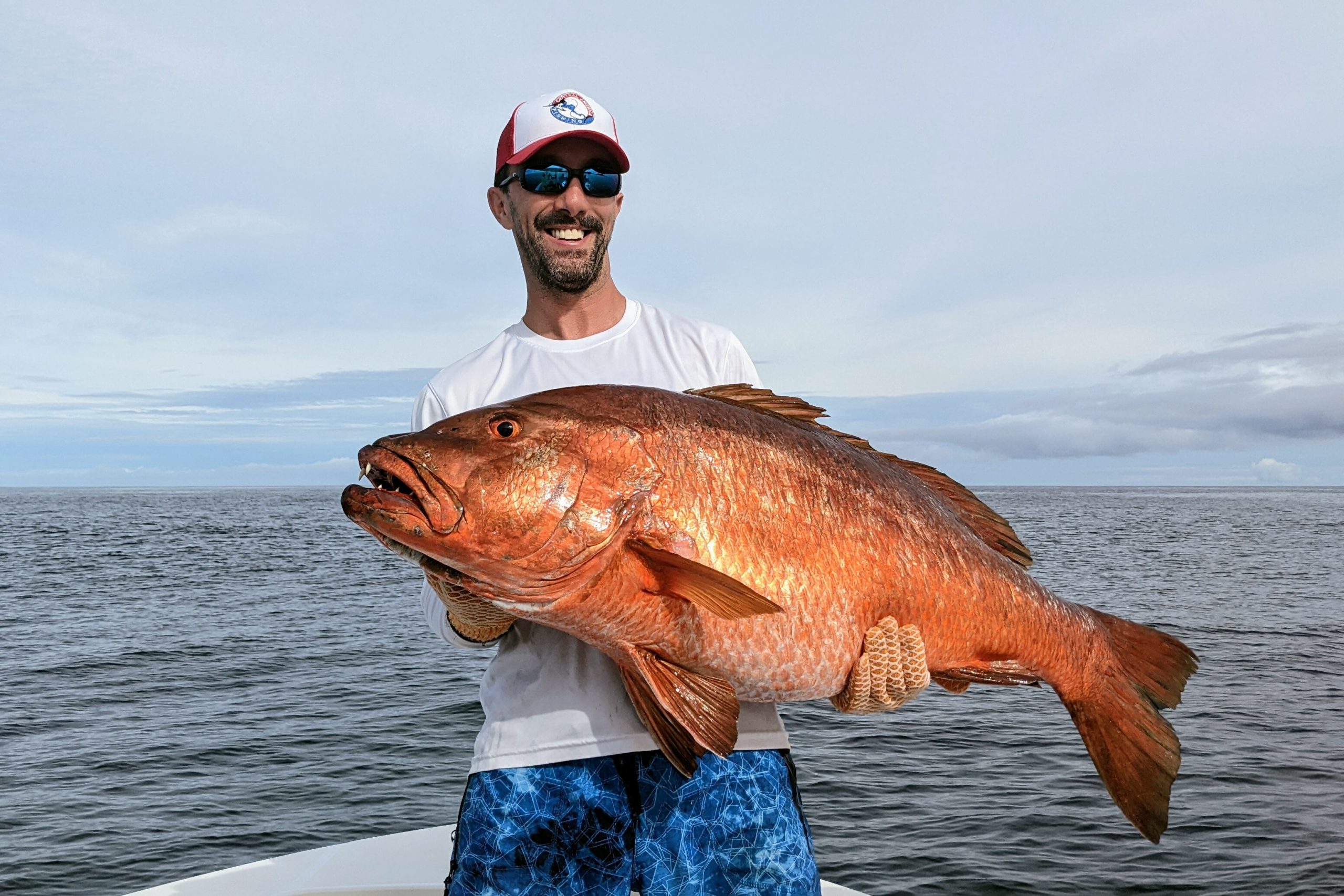
About the Author
I first visited Costa Rica during a semester abroad in 2003 and instantly fell in love with the language, culture, and natural beauty. I caught my first roosterfish on that trip, and ever since then I knew that I wanted to live here. After graduating in 2004, I worked for a year in the corporate world, but I was unhappy and unstimulated, so I returned to live in Costa Rica full time in 2005. Today I can proudly say that I’ve been in Costa Rica for half of my life, I met my wife here, and my two boys were born here so they are “Ticos”.
I’ve been working in the sport fishing industry in Central America for twenty years, I’ve had articles published in fishing magazines, hosted fishing TV shows, fished in several tournaments, and I’m a four-time IGFA trophy club member. I am however most proud to say that 40% of our anglers are repeat and referral guests. I’ve personally visited every destination, hotel, and fishing lodge that we partner with so that your next vacation with us is one of the best you’ve ever had.
Chris Atkins - Angler & Owner of Central America Fishing
All fishing vacations booked with Central America Fishing include the following:
- Free Vacation Planning (no fees + direct rates)
- VIP Airport Meet & Greet upon arrival into SJO
- Private, air-conditioned transfers with English speaking driver.
- Luxury, private accommodations hand-picked and customized for your group. Choose between private condos & villas, luxury beach resorts, exclusive boutique hotels, and fishing lodges.
- Private fishing charters
- All eco / adventure tours you’d like to include
- All Costa Rican taxes
- Free quotes on travel insurance
- Pre-arrival assistance with dinner reservations, tee times, pre-stocking your condo or villa, hiring a private chef, and special requests.
- 24/7 support once you are here in country
